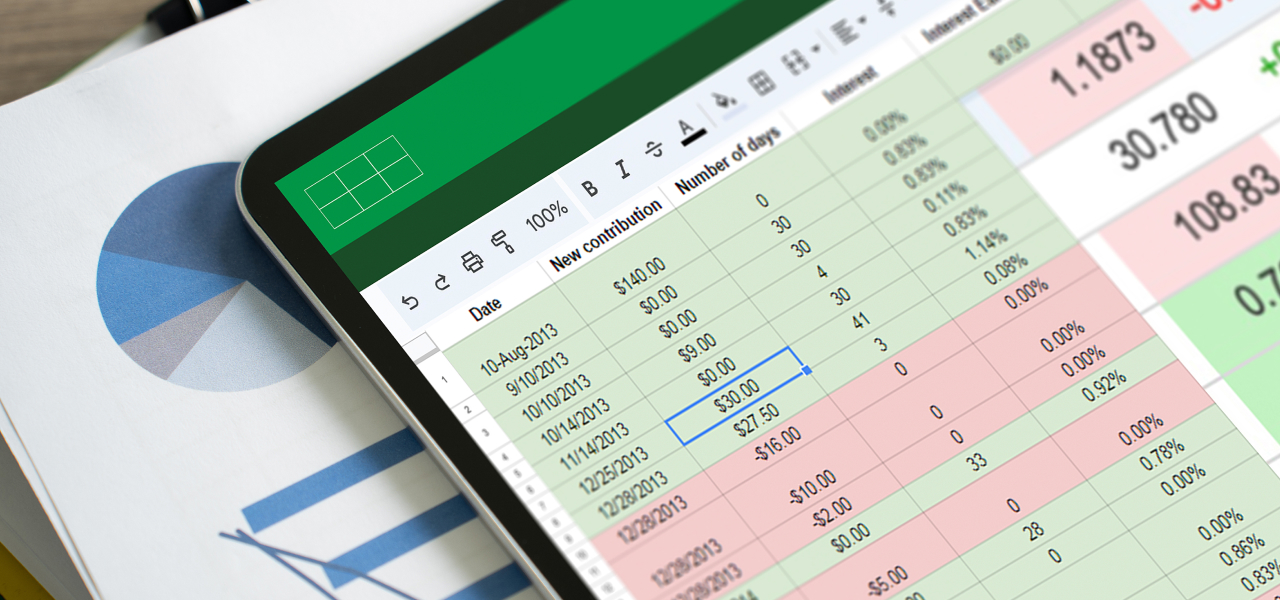Despite glossy demos from vendors, 80% of family offices still rely on linked spreadsheets for valuations and capital-call tracking.
Excel remains predominant in the wealth management industry
Excel is still running the back office for almost everyone in private capital. The exact numbers shift by segment, but most are anywhere close to being done with spreadsheets.
Family offices may be the most Excel-dependent operators in high finance. Recent data pulled from the 2024 Family Office Software & Technology Report shows that 57% of service providers say roughly 80% of family offices still lean on Excel as their primary tool for core finance work like accounting, consolidated reporting, and performance tracking. That same finding has been echoed in 2025 commentary that flat-out says spreadsheets remain the main system of record for about four out of five family offices. The result is manual reconciliation across dozens of entities, slow reporting, and version-control chaos, especially around tax, capital accounts, and cash forecasting.
Private equity firms are not much better. A global Preqin survey of 300 private capital fund managers found that 46% relied exclusively on Excel to monitor portfolios. That survey is from 2018, and it’s old in tech years, so you’d expect the problem to be solved by now. It isn’t. Current private equity operations are still often described as a folder of quarterly PDFs and a shared spreadsheet passed around by email, which is how many firms still assemble portfolio monitoring packs for partners and LPs. CFO surveys going into 2024 and 2025 describe rising LP pressure for better transparency and faster data, which implies that this spreadsheet-and-attachment habit is still the default and is now seen as a liability, not just an inconvenience.
It’s not just family offices and private equity, 21st century funds are also stuck in the 20th century
Hedge funds are openly admitting how deep the spreadsheet dependency goes. Research published in January 2025 by Beacon Platform, based on 100 senior hedge fund executives across the US, UK, and other major markets, found that 73% believe their firms are wasting time on manual spreadsheet-based portfolio analytics and optimization. Seventeen percent say spreadsheets power more than half of their operations, and nearly 60% say spreadsheets still handle between a quarter and half of day-to-day workflows. In other words, for a meaningful chunk of hedge funds, Excel is still not just a modeling tool. It’s core infrastructure for risk, reporting, and decision support, even at multi-billion-dollar scale.
Fund administration was supposed to be the grown-up in the room, but even there, spreadsheets are still sitting in the middle of NAV production, reconciliations, fee calculations, and investor reporting. A May 2025 summary of KPMG survey data notes that more than 30% of fund managers and administrators still depend on Excel for critical portfolio management functions. Industry consulting work in September 2025 backs up why this matters. Administrators describe reconciliations, NAV calculation steps, and investor report assembly as slow, manual, error-prone activities because data lives in different systems and has to be pulled together and checked by hand. That manual stitching is exactly where spreadsheet logic tends to live.
Put that together and the pattern is blunt. Family offices still run on Excel for core accounting and reporting. Private equity still chases numbers through emailed spreadsheets and PDFs when LPs ask for clarity. Hedge funds still model risk and P&L in spreadsheets even when they know it’s inefficient. Fund administrators still reconcile data in Excel during NAV and investor reporting cycles. The industry talks nonstop about automation, AI, data lineage, real-time dashboards, single source of truth, all of it, and some firms are moving there. The baseline reality, though, is that Excel is still the system most people trust enough to close the books and send numbers to investors.
One broken formula, and a $50 million K-1 waterfall is off by basis points nobody can trace
This type of failure is exactly the kind of failure people inside firms complain about but never publish. A carried interest waterfall for a private equity fund or a complex partnership distribution in a family office is usually modeled in Excel. You’ve got preferred return hurdles, catch-up mechanics, multiple share classes, fee offsets, tax adjustments, and capital account step downs that feed K-1 allocations. All of that logic chains across tabs. If one link in that chain references the wrong cell, rounds the wrong way, or pulls stale ownership percentages from last quarter instead of current, the final output can be off by several basis points. On 50 million dollars of distributable profit, a 5 basis point swing is twenty five thousand dollars. That’s not hypothetical math. That’s enough to make an LP call and ask why their K-1 shows a different allocation than their internal model.
The really painful part is not that it goes wrong. The painful part is you often cannot prove why it went wrong. Spreadsheets are terrible at telling the story of how a number was produced. You see an error in a final distribution cell. You start clicking backward through formulas. You realize someone hard-coded an override in March because of an exception for one investor. That override was then copied forward into the June version, the September version, and the year-end version. The file name is now Waterfall_Final_v17_ACTUAL2.xlsx because the first sixteen finals were not actually final. When tax and audit start asking for support, the team has to reverse engineer their own spreadsheet to defend numbers that already went out the door. That is the nightmare.
Small discrepancies that snowball
If you zoom out beyond waterfalls and K-1s, spreadsheet dependency creates several recurring problems for wealth management, family offices, PE CFOs, and fund admins. First is silent logic drift. Every time someone copies a workbook to start a new quarter or a new fund, small differences creep in. A fee cap gets tweaked. A tiered management fee breakpoint gets hard-coded instead of referenced. A carry tier changes from 20 percent to 15 percent for one investor class and that change propagates into the wrong class the next cycle. After a year or two, you end up with three versions of economic terms for what is supposed to be the same product. Nobody is being malicious. They are just moving fast and shipping money.
Second is untracked manual intervention. Excel invites people to solve problems in the moment. Capital calls closed a day late for Investor B. That means Investor B owes a tiny bit more preferred return than everyone else. Someone plugs a manual interest adjustment into one column because it is quicker than reworking the whole accrual engine. Six months later that same sheet drives allocations, and the one-off adjustment — which was never documented — flows through to tax basis, partner capital, and realized gain recognition. Now Investor B’s K-1 and capital account statement do not reconcile without a story. If the person who made the manual fix has left, that story is gone. This is exactly what LPs mean when they talk about key-person risk in back office operations.
Excel can sometimes create as many problems as it solves
Another problem that often arises is timing mismatch between books and reporting. A lot of firms post activity in the GL a certain way for GAAP, then reshape that same data in Excel to produce investor level reporting. The reshaping often includes look-through across entities, grouping of assets into sleeves, and performance presentation that matches whatever the investor expects to see. That sounds fine until mid month cash movement happens after statements are built but before they are sent, or until someone forgets to roll one sleeve forward. Now the GL, the investor dashboard, the PDF report, and the tax package are all slightly different. Small gaps like this erode trust faster than actual performance losses, because investors assume sloppiness in the reporting means sloppiness in the money.
Rounding and precision can also be an issue. Family offices and PE funds do a lot of work at the sub basis point level. Preferred return accrues daily. FX translation runs out to four or five decimals. Waterfall logic often hinges on whether the GP has fully caught up to a true 20 percent or is sitting at 19.97 percent. Excel will quietly round in intermediate cells, hide long decimals, or convert long numbers to scientific notation when someone drags a column width. That can change breakpoints. If you cross a breakpoint too early, GP carry can accelerate. If you cross it too late, LPs get underpaid. It is the kind of mistake that might not move cash by millions today but will show up at exit when everyone argues over cumulative carry.
Black boxes and regulators
Regulators and auditors do not like black box reconciliations that live in personal files. When ownership interests, fee offsets, or tax allocations are being calculated in a private workbook instead of in a controlled system with an audit trail, you are basically running a shadow ledger. That is fine until something goes wrong. Once something goes wrong, it turns into discovery. Who had access. Who changed this cell. When. Why. Was it authorized. Spreadsheets cannot answer those questions cleanly. Systems with field level change logs can.
Excel scales linearly with human attention. If you double AUM, double the entities, or double the number of partner classes, you do not get efficiency. You get more tabs and more late nights. The work only feels fine at fifty accounts. It breaks at two hundred. That is where you start to see missed capital calls, delayed distributions, and investor relations teams doing apology calls because reporting went out late or with corrections. At that point the operational drag is no longer just an accounting nuisance. It is a reputational risk with clients who can move money.
Conclusion
One broken formula can move dollars in a way that is both real and hard to unwind. The broader point is that spreadsheet dependency is not just about fat-fingering a number. It is about the fact that spreadsheets let you ship money without institutional controls, and sooner or later that gap shows up in economics, tax, reporting credibility, or investor trust.








